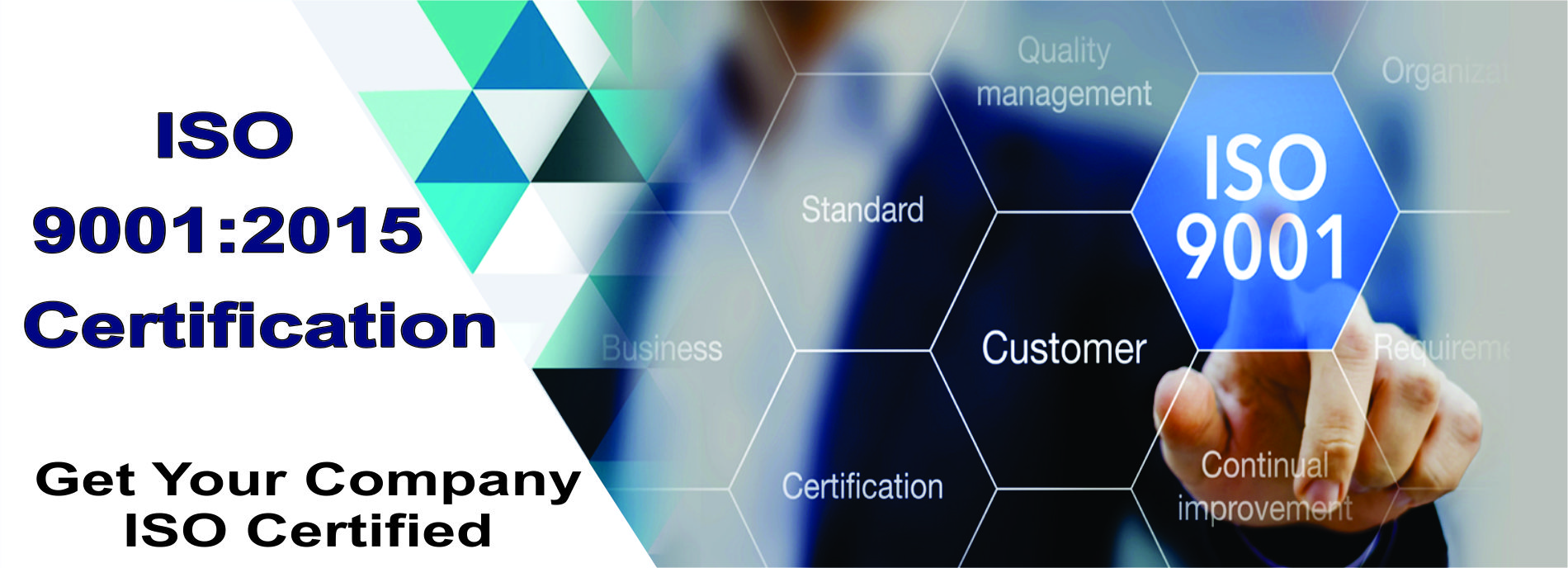ISO Certification Services
ISO 9001:2015
ISO 14001:2015
ISO 45001:2018
ISO 22000:2018
ISO 27001:2022
ISO 50001:2018

ISO 9001:2015
ISO 9001:2015 (QUALITY MANAGEMENT SYSTEM) – is the most widely recognized ISO standard. This is a basic quality management system that can be implemented in industries of any type, any size, anywhere in the world. Registration to ISO 9001:2015 Standard provides objective proof that a business has implemented an effective quality management system, and that it satisfies all of the requirements of the applicable ISO standard.
An external, impartial expert called a register or CB (Certification Body) conducts an on-site audit to determine whether or not a company is in conformance to the ISO 9001:2015 standard. If they are found to be in conformance, they will be issued a ISO 9001:2015 certificate showing their address, scope of operations and the seals of the accreditation bodies and board that give the register its legitimacy.
The ISO 9001:2015 series of standards are based on eight dynamic Quality Management System Principles.
Etica Global ensures that its services are available to all its clients and these services are not based on undue financial or any other consideration. Etica Global ensures that all its procedures /guidelines operate in a non discriminatory manner. etc.
PRINCIPLE OF ISO 9001:2015 STANDARD
Provides a systematic and visible approach for continual improvement in the performance.
Edges over competitors who are not accredit.
Improved product reliability
Better documentations of processes
Better process control and flow
Quality is constantly measured
Increased customer confidence and international acceptance.
Reductions in product scrap, rewords and rejections
Structure the operations of the organization to achieve desired results.
Creates brand name of the organization.
Helps to increase the effectiveness and efficiency of the organization.
For more information about our ISO 9001:2015 Certification, please Contact us.
ISO 9001:2015 STANDARD
Section 1: Scope
Section 2: Normative references
Section 3: Terms and definitions
Section 4: Context of the organization
4.1 Understanding the organization and its context
4.2 Understanding the needs and expectations of interested parties
4.3 Determining the scope of the quality management system
4.4 Quality management system and its processes
Section 5: Leadership
5.1 Leadership and Commitment
5.2 Policy
5.3 Organizational roles, responsibilities and authorities
Section 6: Planning
6.1 Actions to address risks and opportunities
6.2 Quality objectives and planning to achieve them
6.3 Planning of changes
Section 7: Support
7.1 Resources
7.2 Competence
7.3 Awareness
7.4 Communication
7.5 Documented Information
Section 8: Operation
8.1 Operational planning and control
8.2 Requirements for products and services
8.3 Design and development of products and services
8.4 Control of externally provided processes, products and services
8.5 Production and service provision
8.5 Release of products and services
8.6 Control of nonconforming outputs
Section 9: Performance evaluation
9.1 Monitoring, measurement, analysis and evalution
9.2 Internal audit
9.3 Management review
Section 10: Improvement
10.1 General
10.2 Nonconformity and corrective action
10.3 Continual Improvement